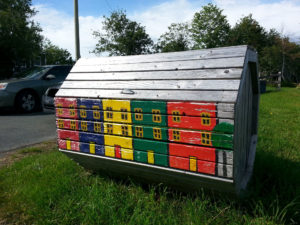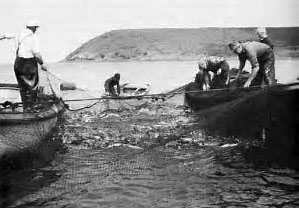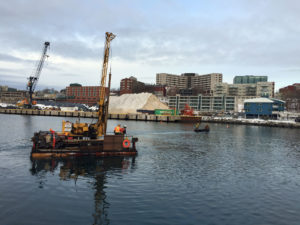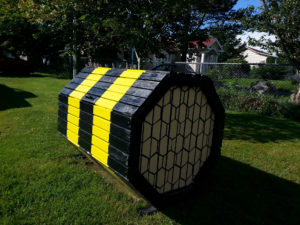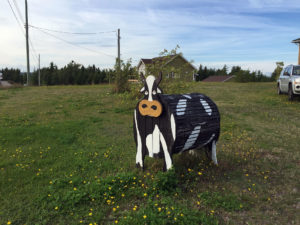Guests often ask about the oddly shaped boxes located at the head of nearly every driveway that intersect the highways and byways here in Newfoundland. As is often the case with guest’s queries, I could provide an answer with just two simple words, but as everyone knows, we Newfoundlanders rarely forego an opportunity to “spin a yarn” and tell a story.
So I start by telling them about my favorite painting. A terribly moving piece that a local Newfoundland artist was inspired to create on the day Canada closed our cod fisheryback in 1992. It is rather appropriately titled ‘Conversations’ – for as you might well imagine, with nearly 30,000 displaced fishermen, there was certainly a lot of talk on that day.
It depicts a pebble beach with lightly rolling waves cascading over a colourful land wash. Along this shoreline she included several sea gulls that feature prominently, immediately catching your eye, and your thoughts. For the artist would have you believe these gulls were engaged in a similar discussion as ourselves, each wondering about the state of our fishery and how we would feed ourselves in the future.
Thankfully, we found a way.
Newfoundland was able to convince Canada to implement a retraining program for everyone engaged in our fishing industry – most of them focusing on the burgeoning oil development in Newfoundland’s offshore and the technical trades required to extract the resource. When combined with a fisherman’s will, strong backs, and a resilience to nearly all forms of cold weather – we created a highly skilled team of workers who not only service our offshore fields, but as well, pull migratory ‘Hitches’ to “Oil Patches” throughout the world.
At the same time, the gulls were adapting to their new environment and were soon found scavenging in the trash we laid out on garbage day. At first we tried to protect the garbage from the gulls by covering it with blankets or carpet ends. This worked fine until the first cruise ship visit that fall when many of the guests commented on the appalling homeless problem they’d witnessed in Newfoundland, mistaking the roadside garbage roll ups for sleeping vagrants in an extreme display of utter destitution. We were mortified. Newfoundlanders pride themselves on our socialistic tendencies and the safety net it creates for even the most disenchanted.
Needless to say there was soon a ban imposed on this type of garbage protection. While some switched to fishing nets and other forms of transparent covers, the migratory oil workers had a lot more time when they came home on their ‘Turn Around’ . They also had more garbage to protect since they could often be away from their family for weeks at a time – so they applied some of their ingenuity to design and built garbage boxes, often made from pallets and wood scraps they salvaged from their work sites. Which explains why most boxes abide to a seemingly standard architectural design; an octagon shaped barrel, built with small lengths of spruce plank.
But this is Newfoundland, where any chance for artistic expression is often embraced, so many of the boxes are beautifully painted, others emulate the design of the house they represent and some even veer to the radical, exhibiting the creativity for which Newfoundland is so renowned.
I guess you could say the expression “One man’s trash is another man’s gold” takes on an entirely different meaning in Newfoundland.

